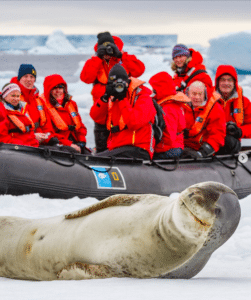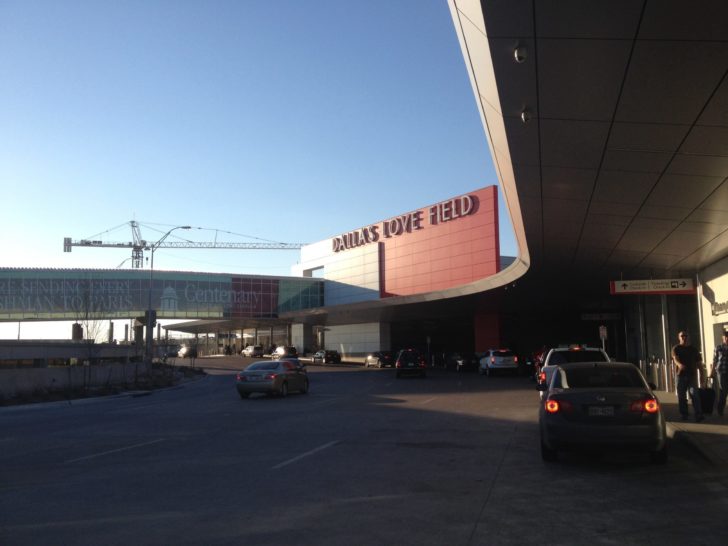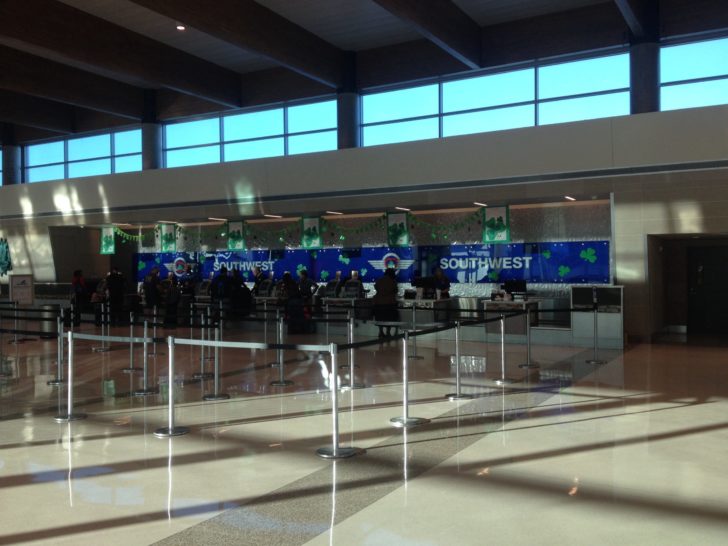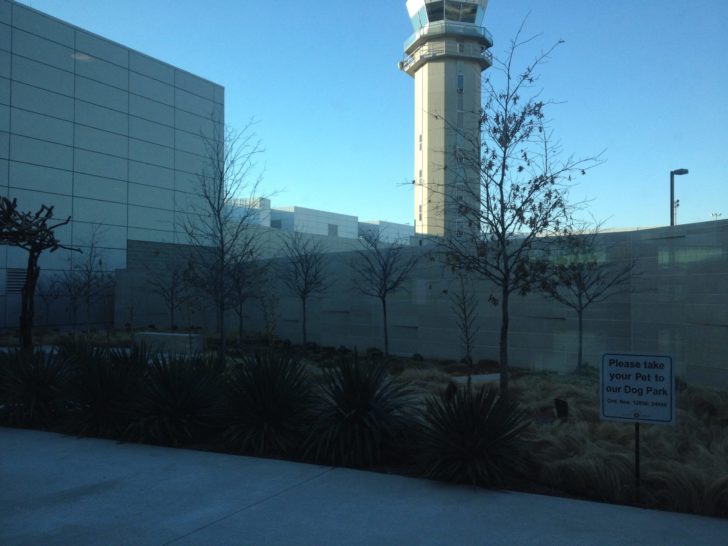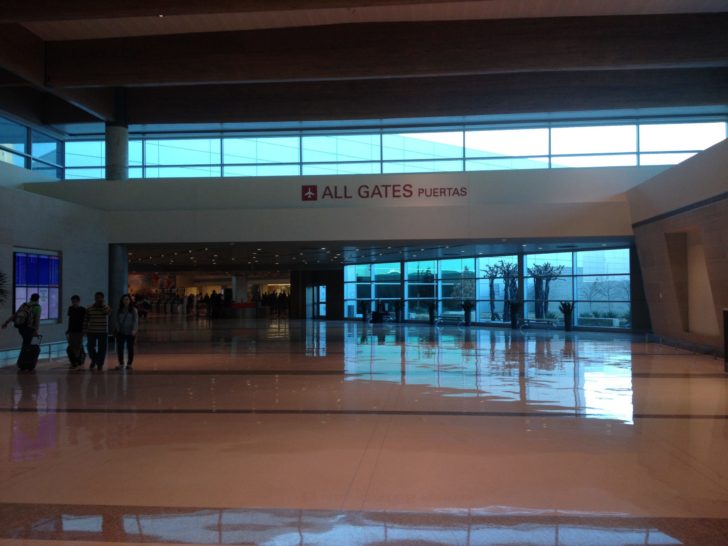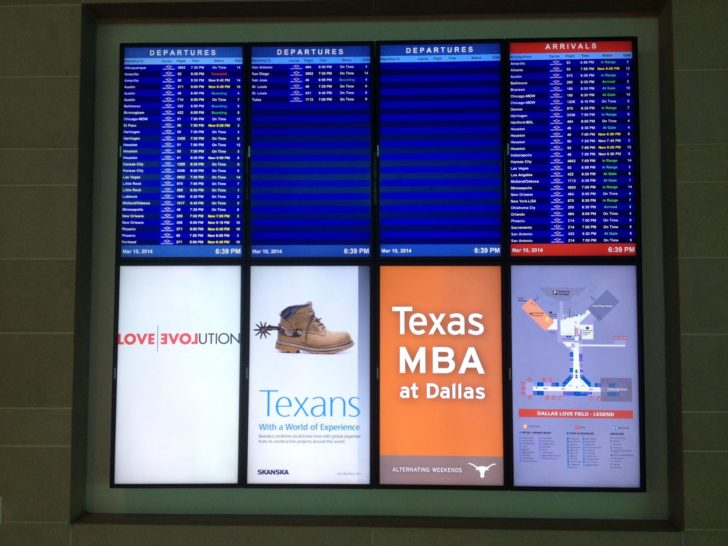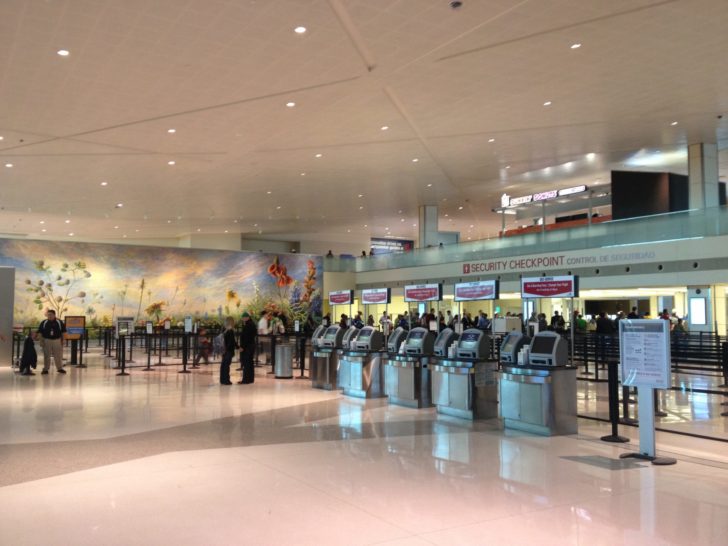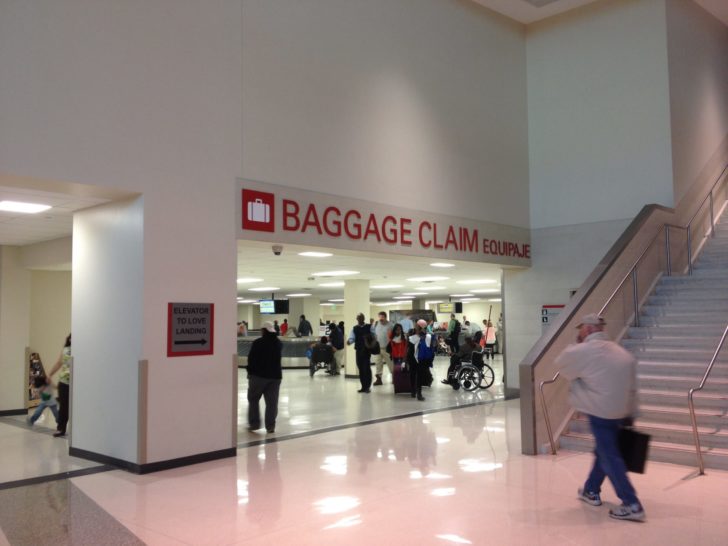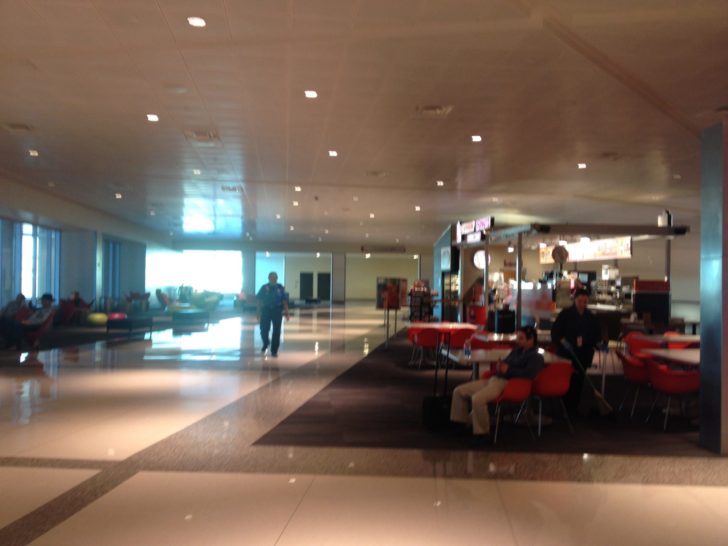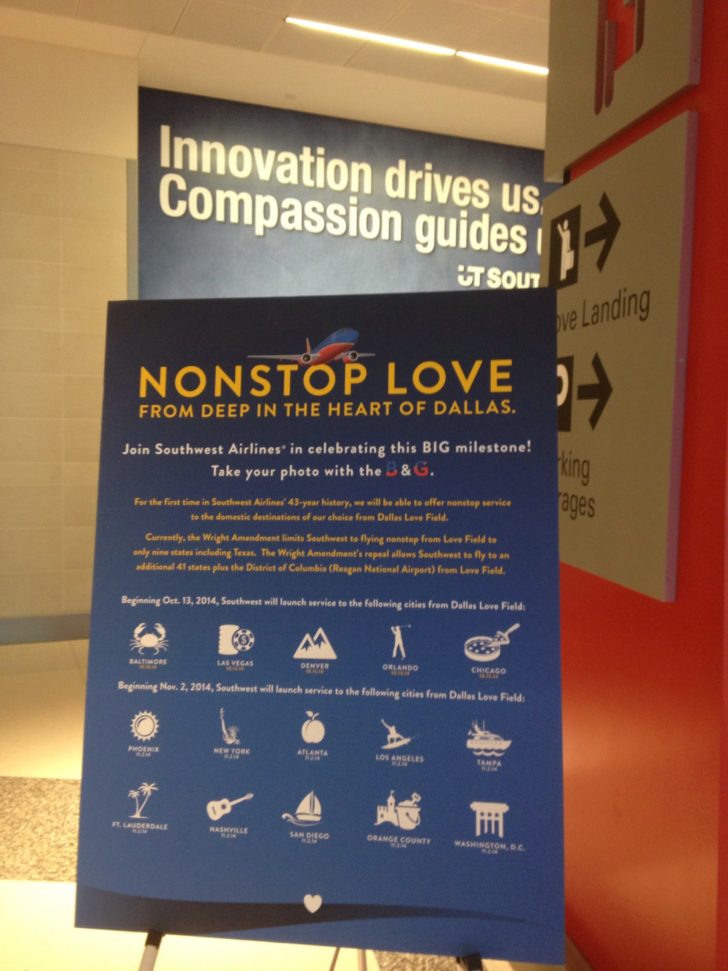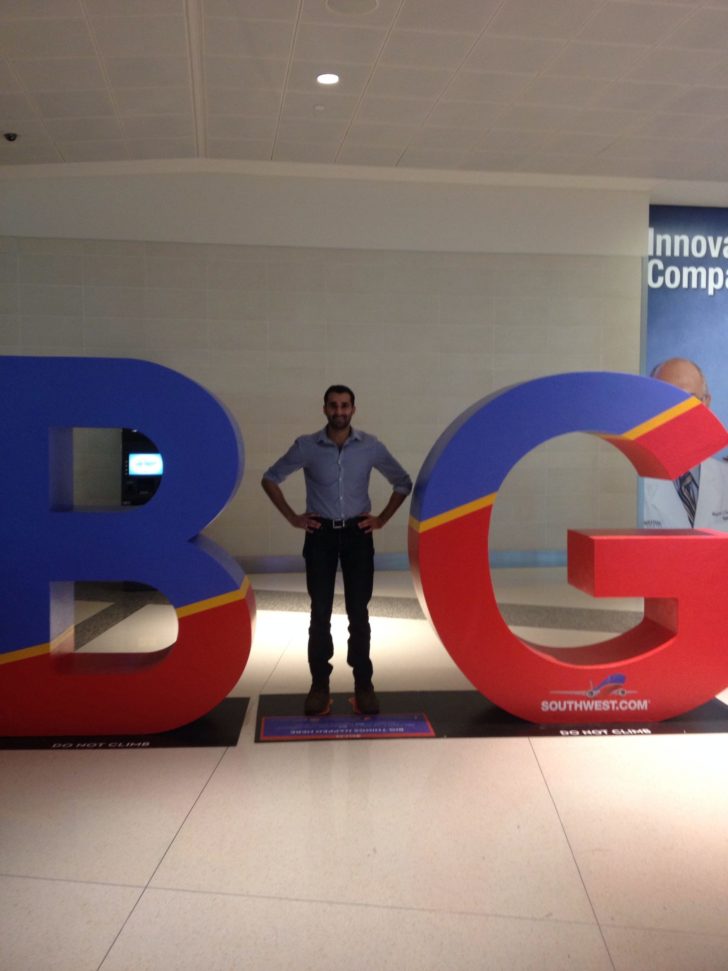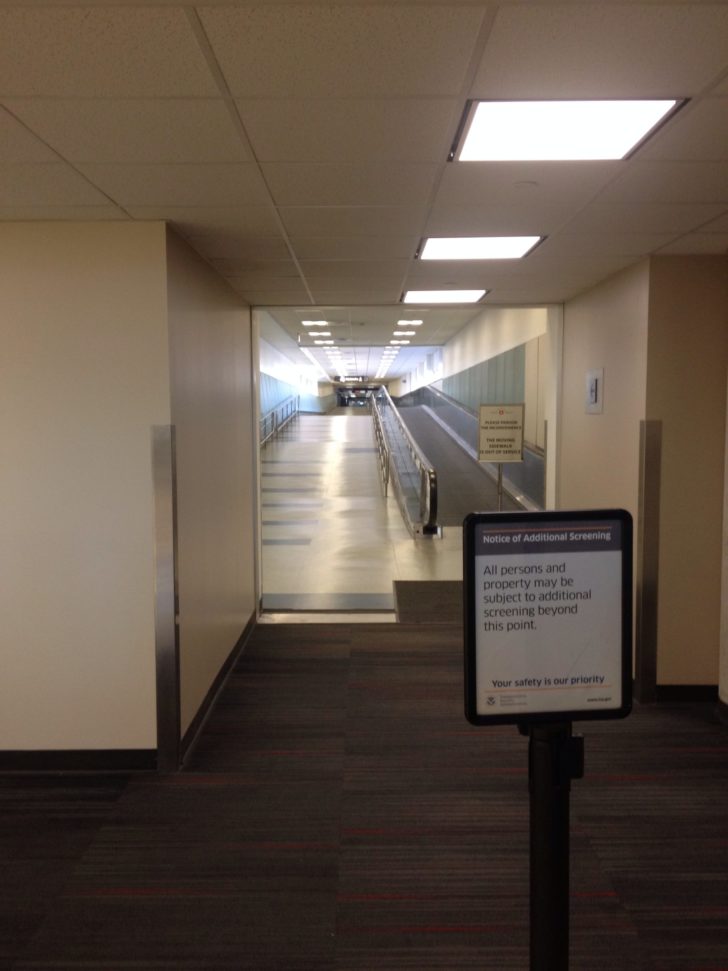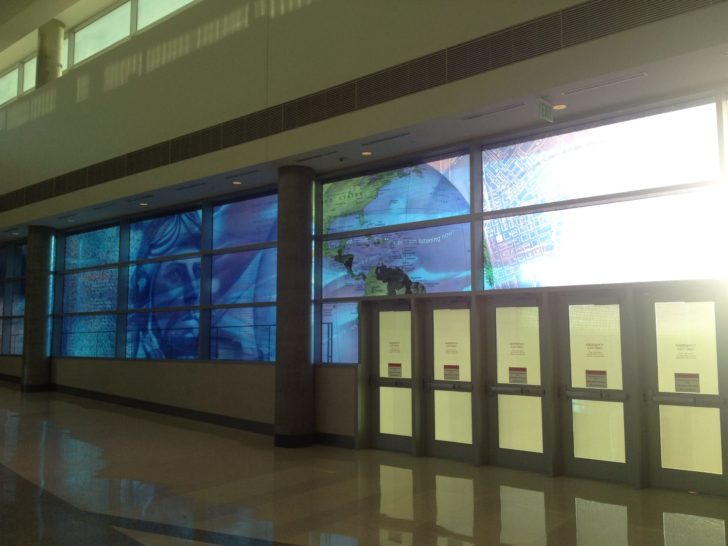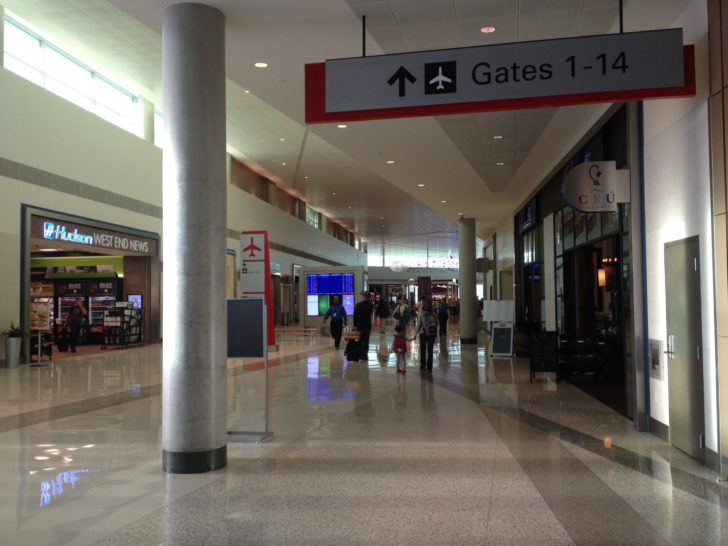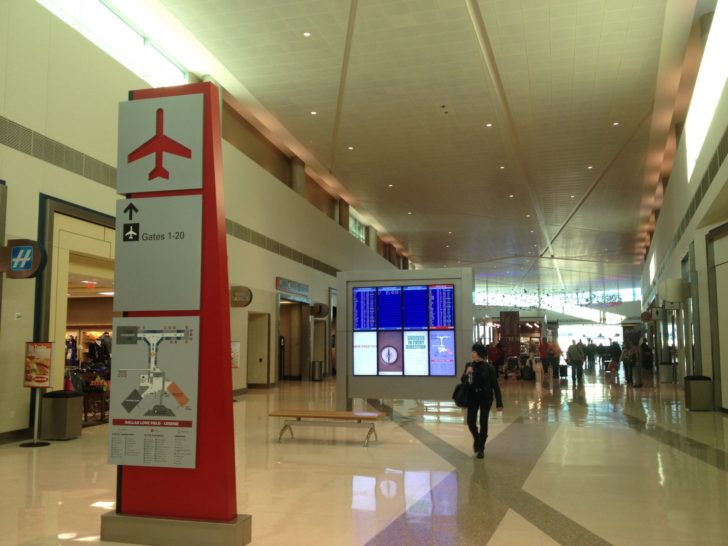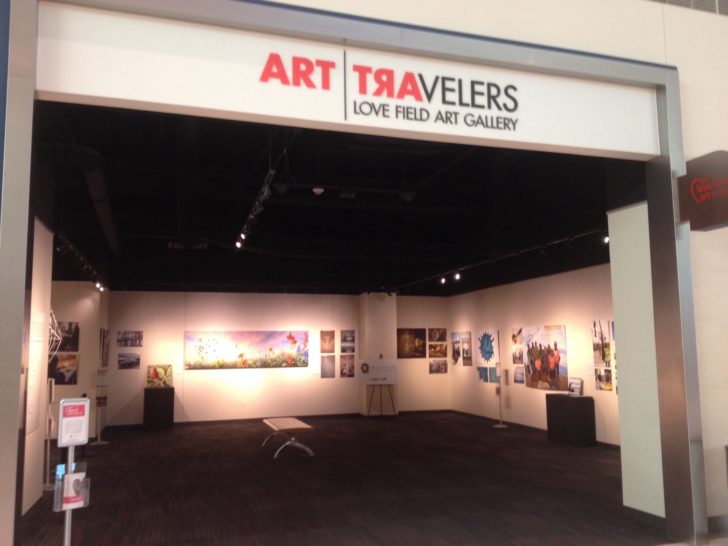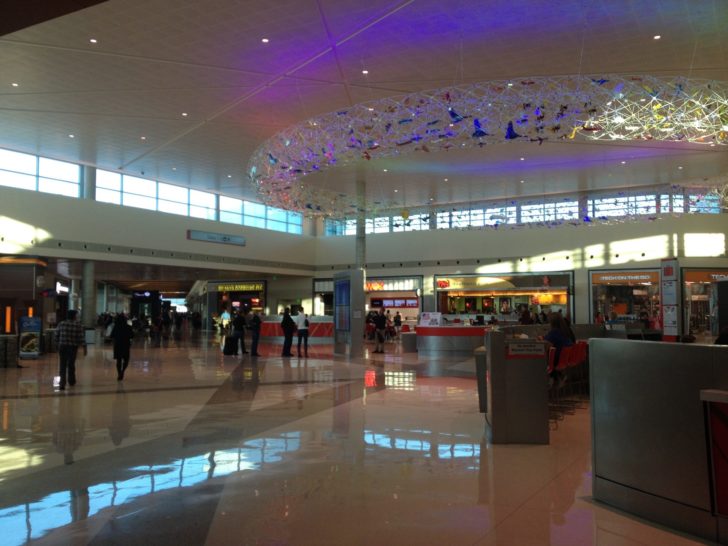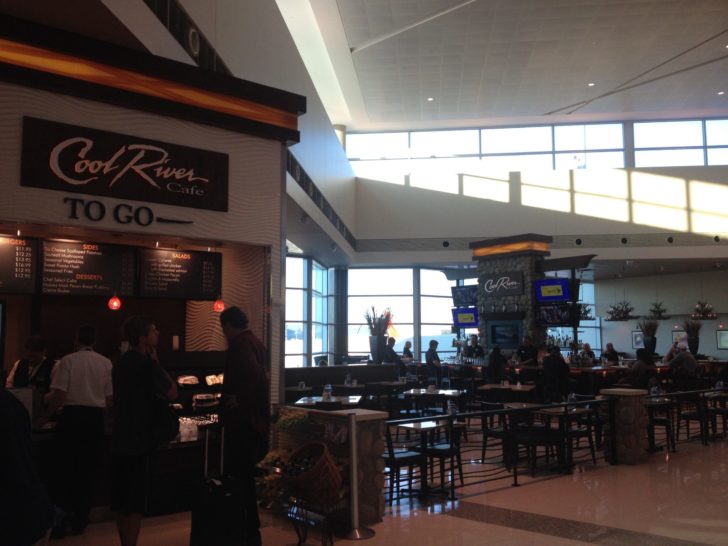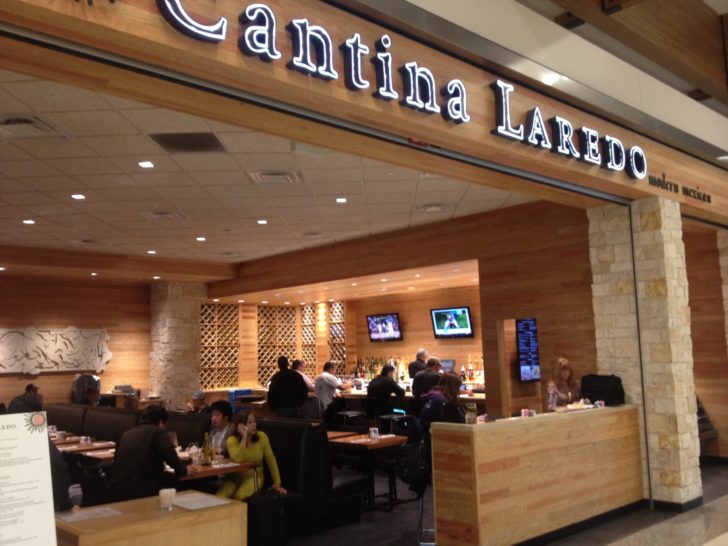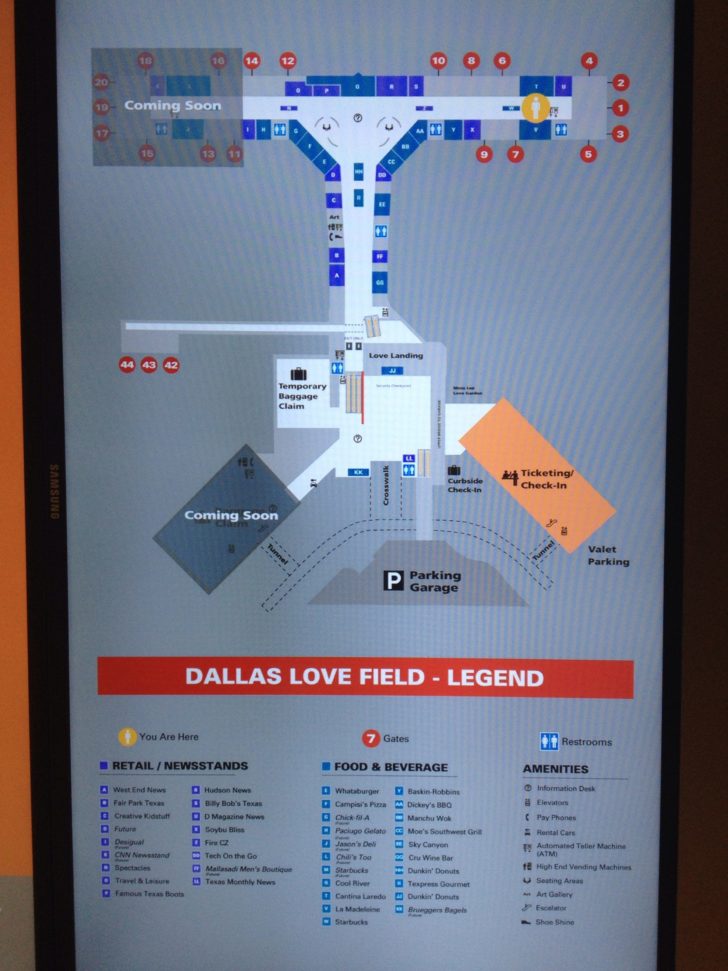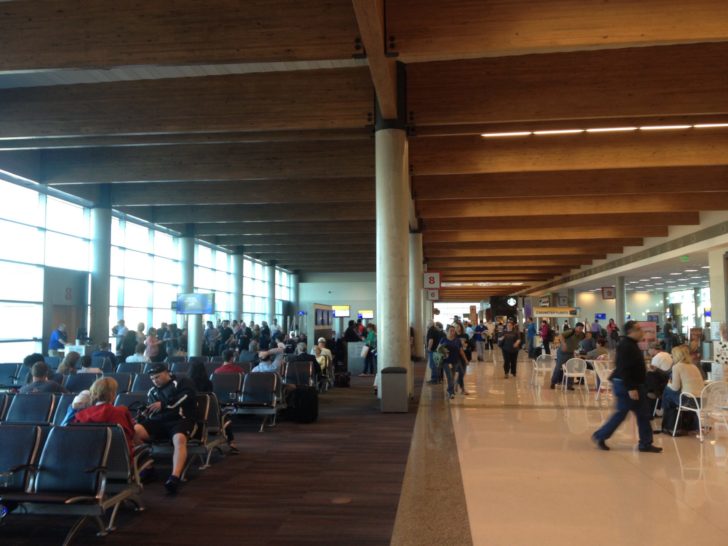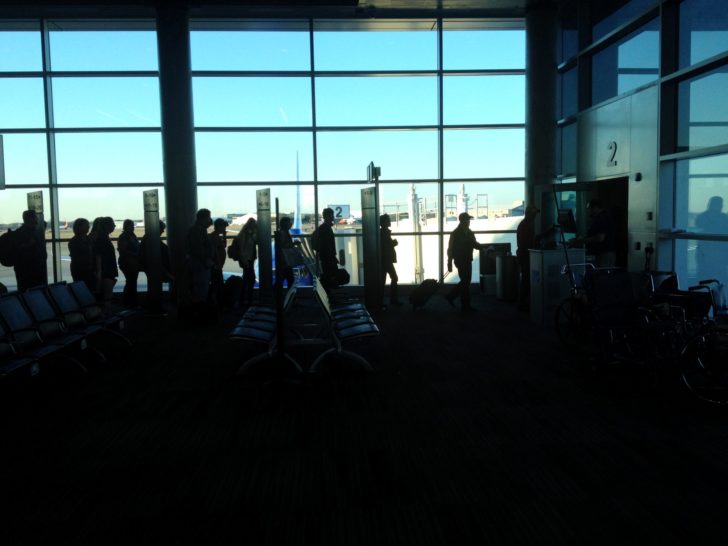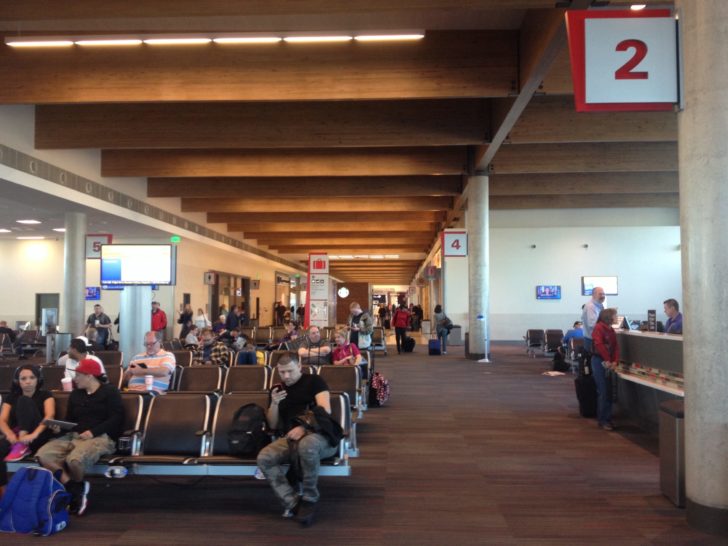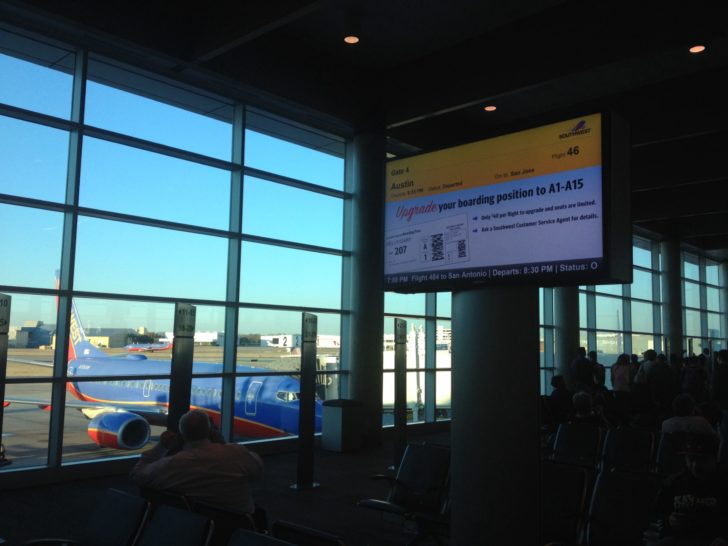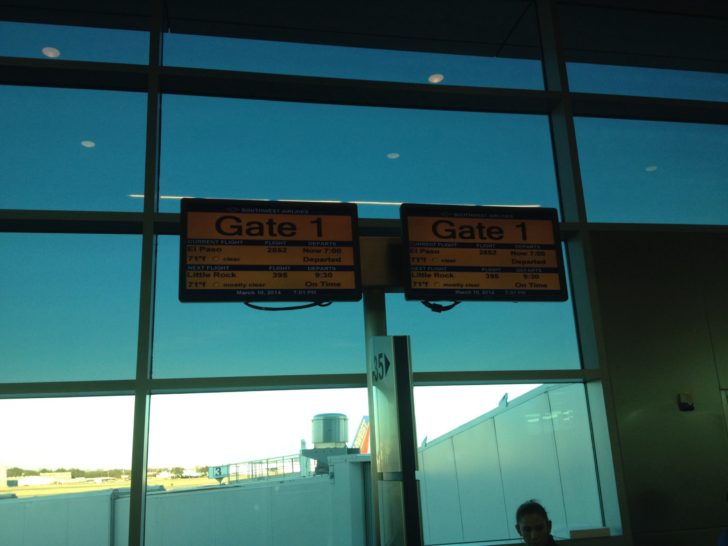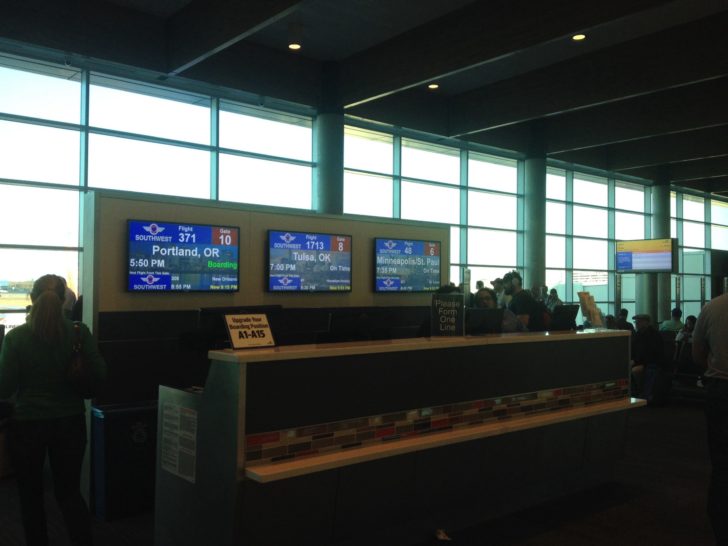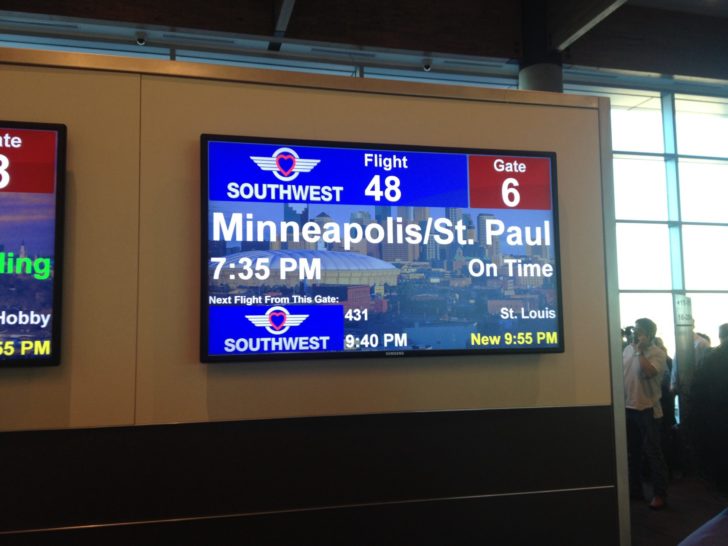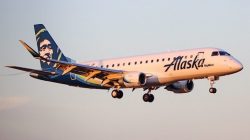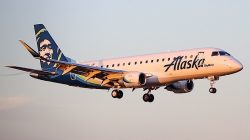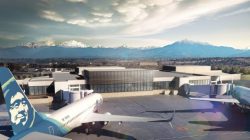‘Leading the LOVE-ULoution’
Change is a beautiful thing.
The new terminal at Dallas Love Field airport has received a much-needed overhaul to bring the airport into the 21st century. I had the chance of flying into DAL last month, and was blown away by the new facilities that now hosts Southwest Airlines at its headquarters airport.
The Love Field Modernization Program (LFMP), a $519 million remodernization project, began in early 2009 to construct a new building that would house 20 gates at DAL, as well as a remodeled lobby, an expanded baggage claim area and a new ticketing wing.
Most phases of the project have been completed, with the exception of 8 of the 20 gates in the brand new Terminal 2. Sixteen of these will be occupied by Southwest, and the remaining four split between Delta (1), United (1) and American (2). The two gates leased to American, however, will be divested as part of a Department of Justice requirement to permit the carrier to merge with US Airways. Southwest, Delta and Virgin America have lined up with bids to acquire the two gates, and the DOJ has yet to announce the winning carrier. Also to be completed is the new baggage claim area.
Pre-security area (exterior, ticketing, check-in and doggy park)
The entrance to the airport on Cedar Springs Road (also known as Herb Kelleher Way, named after the founder and former CEO of Southwest Airlines) has been completely re-designed with a red marquee wall, designed by Corgan Associates, the lead architecture firm for the LFMP. The letterings are simple, yet classy and iconic. The pedestrian bridge, as seen in the photo, connects passengers directly between the Ticketing/Check-In area and parking garages A and B (not pictured).
Southwest passengers have been able to access the new Ticketing and Check-In area for Terminal 2 for over a year now. This is a completely new edifice from Southwests’ former Check-In facilities, which were located towards the western end of the terminal near the new marquee. Passengers flying on Delta and United still fly out of Terminal 1, which houses a separate Ticketing, Check-In and Baggage handling system.
There were virtually no lines this afternoon as I was flying on a Monday evening in March. Check-in was simple and efficient, and my bags were tagged all the way to Minneapolis.
The space is beautiful and modern, features a dog park located in between the Check-In areas and security for pets. Southwest has been “pet-friendly” since it launched its PAWS program (Pets Are Welcome on Southwest) in 2009.
The FIDS displays feature advertisesments sponsored by Texas-oriented businesses and universities. The airport legend also is replete with information surrounding the new concessions and various amenities offered by the airport.
Pre-security area (baggage claim, check-point and passenger waiting area)
The entrance to the security check-point area is much larger and more expansive than in the former DAL terminal, which is a nice upgrade for the customer experience. TSA PreCheck is offered for passengers who are part of the Trusted Traveler program, and there are plenty of kiosks available for customers who are simply checking-in to print boarding pasess and go, or for customers who wish to explore travel options.
Security check-point area with North Texas Sunrise mural in the backdrop, featuring the Blubonnet, the official State flower of Texas
The baggage claim area, located to the left of the security check-point and arrivals stairwell, is a temporary space currently in use for Southwest flights before the new facility is constructed.
To the immediate right of the baggage claim sign is a stairwell that is actually used by arriving passengers. There is actually a post-security waiting area on the second floor for use by those who are greeting and retrieving passengers, and it has a plethora of seats and a Dunkin’ Donuts coffee shop. The nice thing about this space is that there are tables as well as lounge furniture, which is convenient in cases of delays. It also is accessible to departing passengers who may want to visit and relax with non-travelers before entering through security.
Waiting room area just outside of secure area where the public can greet arriving passengers.
Artwork showcase
A major pillar of the LFMP entails showcasing artwork depicting the vibrant culture of Dallas, known as the Love Field Public Art Program. This is a tangible aspect of the customer experience from the moment a passenger steps into the facilities of Terminal 2. Gorgeous murals, sculptures, mosaic patterns and paintings adorn the edifice at various locations throughout the terminal.
For instance, in the picture featuring the security check-point area, a large mosaic mural in the background titled, North Texas Sunrise by Texas artist Dixie Friend Gay, features the Bluebonnet, the official State Flower, among several other Texas plant life and wildflowers underneath a colorful Dallas sunrise. The artwork is comprised of half a million hand-cut, hand-painted jewel-like tiles to form a photographic image measuring 64 feet long by 18 feet tall. According to the LFMP website, the assembly process took nearly five weeks to complete in spring 2013.
The Love Field Public Art Program was a collective effort between the Department of Aviation, Southwest Airlines, the City of Dallas Office of Cultural Affairs and local citizens. There are seven other prominent pieces of artwork at the airport, and the Love Field Art Program has a PDF legend on its website that depicts where each of them are located. According to the website, 45% of the artwork in the Love Field Collection was created by artists who live and work in Dallas.
As a corollary to the artwork program, #DallasBIG, a digital and social media initiative created by the Dallas Convention Center to “celebrate big ideas and the diverse people behind them” can be found in the passenger waiting area on the second floor. The “initiative” entails two life-sized sculptures of the letters “B” and “G” with a space in between for a person to stand in the middle, spelling out “B-I-G.” It’s a very creative project with various sites around the city at key landmarks, parks and public spaces allowing for people to take photos and post them on social media sites.
Southwest, as a celebration of its big milestone this year to commence scheduled, nonstop services outside of the Wright Amendment perimeter states, has taken part of the initiative at Terminal 2 by creating a, “Nonstop Love: from Deep in the Heart of Texas” for passengers. It is actually very well-placed in a strategic spot for customers who are arriving into DAL, and it also provides them an opportunity to take a glance at the first round of beyond-perimeter markets that SWA will be servicing from DAL. The first fifteen new nonstop markets are listed below with an icon next to each one, including:
- A Maryland crab (Baltimore/Washington International)
- Gambling chips (Las Vegas)
- Mountains (Denver)
- A golfer (Orlando)
- Deep-dish pizza (Chicago)
- Sun rays (Phoenix)
- Statue of Liberty (New York LaGuardia)
- A peach (Atlanta)
- A surfer (Los Angeles)
- A boat (Tampa)
- Palm trees (Fort Lauderdale)
- A guitar (Nashville)
- A sailboat (San Diego)
- A Disney castle and sand pail/shovel (Orange County)
- The Lincoln Memorial (Washington National)
“Nonstop Love” markets to be included in the first round of destinations from DAL starting in October
Yours truly demo-ing the purpose of #DallasBIG, painted in Southwest colors.
Post-security
Interestingly, post-security, there is still a corridor attached to the old building Terminal 2 at DAL, which still has a few operative gates with some departing flights. This is accessed by a long moving walkway. While I wanted to take a stroll over there for memories and old times sake, I decided not to since I had little time prior to my departing flight to Minneapolis.
Entering into the sterile area, passengers ascend one flight of stairs and are immediately greeted by an airy, ambiently-lit facility housing gates 1-20 of Terminal 2. One of my favorite components of this experience is the Blueprint of Flight artwork, created by artist Martin Donlin. Immediately to the left of the entry hallway is the Art Travelers gallery, featuring Love Field’s art collection.
From the get-go, passengers will notice the major improvements in food, beverage and concessionaire options from previous years. There is a lovely CRU Food and Wine bar right at the entry way, a Texas-based wine bar that features over 30 wines by the glass, and known for its excellent food pairings.
In the central area of the terminal where the main vestibule ends, there is a plethora of seating spaces for customers without obstructing passenger flows between gates. Moreover, Food and Beverage options have been centrally placed in areas that do not require lengthy walk times from the gate areas to allow passengers to grab a quick bite on the go in between connections or before boarding time starts.
Main foyer where DAL splits between gates 1-10 and gates 11-20 (pictured left). Notice the artwork above titled
Food & Beverage options
As a former Dallassite who holds a strong affinity towards the locally-based restaurant chains and businesses I grew up with, I cannot speak highly enough of the options that Love Field has chosen to incorporate into the mix. I have loved Catina Laredo Mexican food since I was in 5th grade, and the bar area looks incredible! I would love to grab a Texas-crafted frozen Margarita there on my next layover (did you know that the Margarita was invented in Dallas?)
Also featured is Campisi’s Pizza, a locally-famous and Dallas family-owned Italian restaurant, French Bakery and Cafe La Madeleine (hands-down, best chicken ceasar salad, french onion soup and quiche you’ll ever have outside of Paris), Dickey’s BBQ Pit and Whataburger (made fresh, just like you like it). In the pipeline are plans to also open up a Chick-Fil-A, Jason’s Deli, Paciugo Gelato and Chili’s Too.
Gate and waiting areas
Southwest has chosen not to incorporate their “business-style” comfy leather seats at the gate areas like they’ve chosen to do at other airports. However, they have chosen to equip seats with electrical outlets to serve as charging stations for passengers. It still baffles me, to this day, how airlines have not recognized that this is a major customer need before flying. Gate areas are spacious with plenty of spaces for seating. One must also remember that since Southwest flies many “direct” flights with stoppovers, there are a lot of same-plane customers that do not de-board at the gate.
The flight information display monitors are one of my favorite features at the airport. Southwest has done a great job in accessorizing flat-screen TVs with departure information for the current flight, as well as the next flight departing from the same gate, and updated weather information for the destination. The carrier also does push up-sells, such as business select last-minute purchases, which is a good way to help remind the customer of sales options and derive incremental revenue.
I’m not sure if Southwest does this at other stations, but I absolutely love how they have pictures of the skylines of the destination on the departure screen featured in the background, which was the case today for my flight 48 from DAL to MSP (via STL). The Minneapolis skyline was in the background, along with the Mall of America field, where the Minnesota Vikings play. If you notice elsewhere on the FIS displays, WN also did this for the flights departing from adjacent gates to Portland and Tulsa.
Overall impressions: this airport ROCKS, and its overhaul is overdue
Dallas Love Field airport has done a fantastic job as it nears completion of the LFMP. Given the massive growth and high-level of competition in the North Texas commercial aviation ecosystem, it is critical for Southwest Airlines and Dallas Love to provide customers with an airport experience that entices the public to fly through the airport. Previously, the old Love Field airport facilities provided nowhere near the same level of modernization that today’s customer warrants.
A common misconception about Dallas/Ft. Worth metro-area airports is that Love Field is far more convenient and accessible for inbound and outbound passengers over the mega DFW Airport, as DAL (Love Field) is located closer to downtown Dallas, as well as more affluent neighborhoods in Uptown and North Dallas, whereas DFW is located in the mid-cities between Dallas and Fort Worth and requires commuting on a major highway or expressway for access.
In reality, DAL is actually more inconvenient for a larger demographic of the Dallas/Ft. Worth metropolitan area, and it is only accessible by one major road (Cedar Springs) in a fairly congested part of the city. Even though many of Dallas’ most frequent road warriors live just a quick hop on the North Dallas Tollroad from DAL, the stop-and-go movement on Mockingbird Lane is a major headache for some. With DFW only a mere 10-15 minutes further via Interstate 635, Loop 12/Highway 183 or even the George H.W. Bush Turnpike, it can be an easy toss-up between choosing to fly Southwest out of DAL or other carriers out of DFW.
However, up until this year, travelers have faced greater limitations with the Wright Amendment restrictions at Dallas Love Field, but these will be lifted come October 2014. The first phase of new markets (Baltimore, Denver, Las Vegas, Orlando and Chicago Midway) will come in October, and the second round (Atlanta, Fort Lauderdale, Los Angeles, Nashville, New York LaGuardia, Orange County, Phoenix, San Diego, Tampa, Washington National) will start in November 2014.
Southwest will be successful in building on its strong loyalty base in Dallas when it opens up nonstop routes to more markets across the country. There will be some obstacles to overcome, particularly as the competitive dynamics in North Texas’ commercial aviation market have changed, but without question, the new liberties (and airport facilities) will be strongly embraced and revered by local travelers.
EDITOR’S NOTE: This is part 1 of a 3-part series assessing the new competitive dynamics in North Texas as Love Field gears up for changes and the end of the Wright Amendment restrictions. Parts II and III will evaluate the potential candidates for the remaining 2 gates relinquished by American (Delta, Virgin America and Southwest) and assess which carrier offers the best value proposition for North Texans based on their proposals

